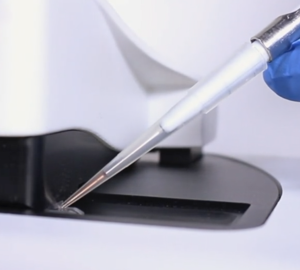
Your ideal automated cell counter depends on cell counting method and application
To optimise cell counting processes, many researchers are shifting from haemocytometers to automated counters, aiming to improve throughput, accuracy, and standardisation. Selecting the appropriate cell counting instrument is crucial for laboratories involved in cellular research, yet the increasing variety of options complicates decision-making. However, this decision profoundly impacts research outcomes and applications, underscoring its significance. Our guide emphasises the importance of choosing the right cell counting instrument tailored to your specific lab needs, highlighting its potential to enhance efficiency and accuracy while advancing scientific breakthroughs in molecular biology, immunology, and drug development. Join Cambridge Bioscience experts in exploring key considerations for selecting a cell counter, to gain the confidence you need in selecting the instrument that will transform your research.
When selecting a cell counting method, it's essential to tailor it to your downstream application's specific needs. Image-based counting with Trypan Blue staining distinguishes between live and dead cells effectively, suitable for routine culture samples but less so for complex or low-viability samples. Fluorescent image-based counting offers greater accuracy, particularly useful for intricate samples like primary cells or PBMCs, providing counts comparable to Trypan Blue methods. Non-image-based methods automate counting, ensuring reproducibility and versatility in analysing various objects, from cells to microorganisms, thereby enhancing the quality of insights gained from sample analysis.
Inspired by our new automated cell counting guide eBook now available for download, the aim of this blog is to give you a brief overview of which instruments you should be looking at depending on your research needs.
| Assay | Type | Viability count | High-throughput | Cell culture | Primary cells | PBMCs | Yeast | Bacteria | Suggested instrument |
|---|---|---|---|---|---|---|---|---|---|
| Stain-free, Brightfield | Imaged based/Brightfield | X | CellDrop BF | ||||||
| Trypan Blue | Imaged based/Brightfield | X | X | CellDrop BF | |||||
| AO/PI | Imaged based/Fluorescence | X | X | X | X | X | CellDrop FL, ADAM-MC2 | ||
| AO/DAPI | Imaged based/Fluorescence | X | X | X | X | X | EVE-HT FL | ||
| Stain-free, impedance based | Electrical current exclusion (ECE) | X | X | X | X | X | X | CASY |
Imaged-based – brightfield
Image-based brightfield cell counting methods, leveraging advanced imaging technology and algorithms, offer significant advantages in biological research and clinical diagnostics over traditional manual techniques. They provide accurate, efficient, and versatile solutions for quantifying cells in diverse samples, generating high-resolution images with exceptional contrast to eliminate human error and subjectivity, while enabling objective digital analysis. Should you only require imaged-based brightfield capabilities, we highly recommend the CellDrop BF.
The CellDrop BF is one of the most widely-used and accurate automated cell counters on the market, perfectly designed for cell culture sample types.
Image-based – fluorescence
Image-based fluorescence cell counting hinges on the emission of fluorescent signals from labelled cells when excited by specific light wavelengths. Fluorescent dyes or proteins selectively mark cellular components or biomolecules like nuclei, cytoskeletal structures, or surface markers, and can be used for cell counting applications. Various instruments cater to researchers' diverse cell counting needs using this method.
Should you need an instrument with both image-based brightfield and fluorescence capabilities, we recommended checking out the CellDrop FL. The CellDrop FL comes with a wide variety of different applications downloaded, making it the best all-rounder.
If your desired application is cell therapy quality control, we recommend you find out more about the ADAM-MC2. Capable of counting a wide range of cells including stem cells, CAR-T cells, CAR-NK cells, and peripheral blood mononuclear cells (PBMCs) with results in less than 25 seconds.
For high-throughput fluorescence cell counting applications of a wide variety of sample types, the EVE-HT FL is an excellent choice, with accurate cell counts of fluorescently labelled cells within up to 48 samples in a mere 3 minutes. With its capability to process small 20 μl sample volumes and accommodate extended capacity, the EVE-HT FL ensures precise cell counting and viability assessments.
Electrical current exclusion
Also known as Coulter™ counting or impedance-based cell counting, this method quantifies and sizes suspended particles in an electrolyte solution. It relies on changes in electrical resistance as particles pass through a small aperture in a circuit, displacing electrolyte solution and causing detectable impedance changes proportional to cell size and number. CASY utilises this technology to differentiate between cell debris and live/dead cells, accurately counting cells within aggregates, making it ideal for samples with cell clumps. It provides non-invasive analysis for various cell types without dyes, quickly delivering comprehensive information on cell culture status supported by an integrated QA system. Operating the CASY involves suspending cells in conductive isotonic buffer solution and immersing the sensor in the sample, offering valuable insights before seeding for enhanced experimental success.
The CASY is perfect for a wide range of sample types while putting the emphasis on viability count applications.
Download your free automated cell counter guide eBook
At Cambridge Bioscience, we know that finding the time to compare a wide range of options can be difficult, so we've done it for you. Download your automated cell counting guide to help you decide what would work best for your own research needs. The guide contains all the technical information you need to be absolutely sure about your next cell biology investment. Simply visit our automated cell counter page and fill out the form to receive your PDF copy straight away.
